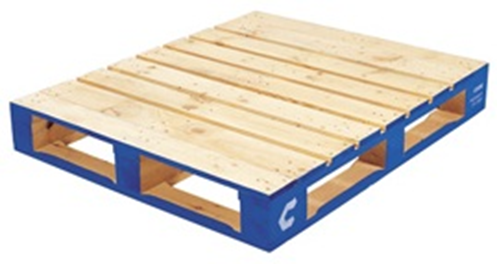Rack protection is essential to prevent damage to exposed parts of your racking
- Keith D Goodfellow (SARI)

- May 6, 2020
- 2 min read
Updated: Mar 7, 2024
Inspection
The inspection should include all forms of rack protection and identify any damage to the protector and fixings and signal the need for rectification or replacement as appropriate.
The need for protection.
All exposed uprights should have suitable protection fitted in accordance with HSG76 and SEMA guidelines but this does not necessarily mean to every upright.
End frame protectors are recommended, in truck operated racking, for all end frames between a gangway and an aisle and also for all end frames between a bridge bay and an aisle. Other racking protection requirements should be considered as identified by the risk assessment.
Rack protectors should be regarded as a ‘last resort’ means of avoiding damage and other methods of damage prevention should be considered before taking the decision to use rack protectors. The use of rack protectors should be carefully considered to ensure that it is appropriate and is not just a quick fix which may lead to further safety issues.
Retrofitting upright protection devices to an existing aisle where they have never been provided can have the effect of reducing the available clearances for fork-lift truck manoeuvres, which can in some circumstances increase the amount of damage caused. Careful consideration is therefore needed as to the correct solution.
When selecting protectors we would always recommend a good heavy-duty freestanding guard, and when fitting ensure adequate clearance off the upright. Where guards are fitted too close to an upright repeated impacts may cause ‘knifing’ damage as the guard flexes where all the force of the impact to the guard is concentrated on the top edge of the guard creating a high point impact where it hits the upright resulting in disproportionate damage. Fitting too close will also restrict inspection of the upright, footplate and floor fixings. SEMA recommend a minimum clearance of 25mm with 40-50mm being preferred.
We do not recommend the cheaper clip on type of guards that fit directly onto the upright. They may be a quick and easy solution but are no way as effective as solid securely bolted freestanding guards and only provide limited protection. Furthermore they must always be removed to allow regular inspection of the upright but can be extremely difficult to remove once fitted so are often simply left in place and in our experience do more harm than good since they can hide damage. Remember just because one of these guards is fitted there is no guarantee that there wasn’t any pre-existing damage or damage caused post fitting. I've inspected many warehouses where these guards have been removed for my inspection and the damage detected is well beyond that possible with the guard fitted.
End of rack runs may need more robust end of row protection that may take the form of Armco type crash barriers or tubular guards. This is particularly important where pallets are stacked at ends of runs since it is routine practice for drivers to stack pallets hard against end frames and this damages the uprights, bracing, and loosens floor fixings. Again a risk assessment will determine the need.




Comments